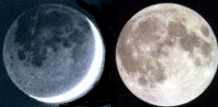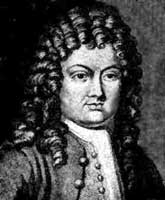What's New - March 2003
[Home]
 March 27, 2003: Here is a
program that calculates the dates of new and full moons for any
past or future range of dates. At a user's
request, I extracted the calculations for this Moon Dates program from a
complete TAstronomy unit that is waiting in the wings for me to
get around to documenting it.
March 27, 2003: Here is a
program that calculates the dates of new and full moons for any
past or future range of dates. At a user's
request, I extracted the calculations for this Moon Dates program from a
complete TAstronomy unit that is waiting in the wings for me to
get around to documenting it.
March 23, 2003: I added the missing Divide operation to Big Float today, thanks to a suggestion from a viewer. The algorithm divides by making successive approximations to the quotient and checks each guess by multiplying by the divisor. Each guess is the average of the last guess that was too high and the last guess that was too low and it seems to converge fairly rapidly. I guess that this is an application of Newton's Method to solve the equation Dividend ÷ Q - Divisor = 0 for Q.

|
|
Brook Taylor |
March 21, 2003: Last week's Big Float posting handled basic arithmetic, but brought up questions about how the Windows calculator program (and other scientific calculators) evaluate log, trig, and exponential functions with lots of precision.
This Taylor series demo posted today over in the Math Topics section provides a likely answer. Big Float's arbitrarily large real numbers are not yet incorporated, but I believe that we now know how to do it.
 March 17, 2003: A persistent
viewer really wanted a 10X10 version of our Token Flip puzzle posted a few months
ago so here it is. This in spite of the fact that neither I
nor the program, nor anyone else I know of can consistently
solve random games larger than 5X5. If someone analyzes this
darned thing and comes up with an efficient algorithm for solving, please
let me know, so I can mark it complete and move
on.
March 17, 2003: A persistent
viewer really wanted a 10X10 version of our Token Flip puzzle posted a few months
ago so here it is. This in spite of the fact that neither I
nor the program, nor anyone else I know of can consistently
solve random games larger than 5X5. If someone analyzes this
darned thing and comes up with an efficient algorithm for solving, please
let me know, so I can mark it complete and move
on.
March13, 2003: Playing with the Windows Calculator program the other day got me curious about real number arithmetic. Why do they only allow 4 digit exponents in most cases? Using the X^Y function why does it calculate 10^43429 OK, but give an error for 10^43430? Why is there limit of 32 significant digits? The result is today's Big Float program which provides a glimpse into the world of arithmetic with large real numbers (but not many answers to the original questions).
March 6, 2003: A couple of weeks ago, a viewer introduced me to the TV game "Countdown: which appears daily on BBC British television. It's apparently quite popular in Europe, but is virtually unknown on this side of the ocean. The game has word anagram and arithmetic expression finding components. Here's my version, Countdown Plus, which solves the arithmetic side of the game plus at least one other problem. The idea is to form a parenthesized expression from a given set of 6 input values which matches a given target value as closely as possible, and you have a whole 30 seconds to do it! This version finds countdown solutions in a few seconds, but also solves a problem proposed last year in Expressions 2002, an expression solver which uses the digits 1-9 to form an expression which evaluates to the year. That program used only + and × operations but allowed the digits to be concatenated into larger numbers (e.g. 12 or 45, etc.). The challenge posed at that time was to solve the problem allowing parentheses, but without allowing concatenations of digits. Today's program does that handily.
